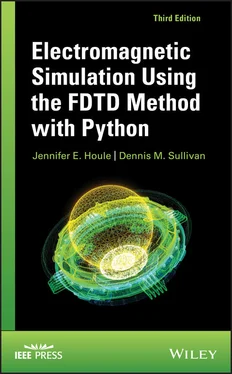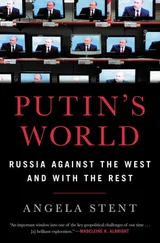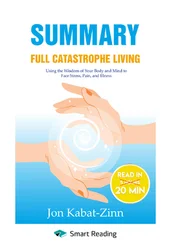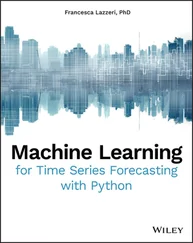Third Edition
JENNIFER E. HOULEDENNIS M. SULLIVAN

Copyright © 2020 by The Institute of Electrical and Electronics Engineers, Inc. All rights reserved.
Published by John Wiley & Sons, Inc., Hoboken, New Jersey.
Published simultaneously in Canada.
No part of this publication may be reproduced, stored in a retrieval system, or transmitted in any form or by any means, electronic, mechanical, photocopying, recording, scanning, or otherwise, except as permitted under Section 107 or 108 of the 1976 United States Copyright Act, without either the prior written permission of the Publisher, or authorization through payment of the appropriate per‐copy fee to the Copyright Clearance Center, Inc., 222 Rosewood Drive, Danvers, MA 01923, (978) 750‐8400, fax (978) 750‐4470, or on the web at www.copyright.com. Requests to the Publisher for permission should be addressed to the Permissions Department, John Wiley & Sons, Inc., 111 River Street, Hoboken, NJ 07030, (201) 748‐6011, fax (201) 748‐6008, or online at http://www.wiley.com/go/permissions.
Limit of Liability/Disclaimer of Warranty: While the publisher and author have used their best efforts in preparing this book, they make no representations or warranties with respect to the accuracy or completeness of the contents of this book and specifically disclaim any implied warranties of merchantability or fitness for a particular purpose. No warranty may be created or extended by sales representatives or written sales materials. The advice and strategies contained herein may not be suitable for your situation. You should consult with a professional where appropriate. Neither the publisher nor author shall be liable for any loss of profit or any other commercial damages, including but not limited to special, incidental, consequential, or other damages.
For general information on our other products and services or for technical support, please contact our Customer Care Department within the United States at (800) 762‐2974, outside the United States at (317) 572‐3993 or fax (317) 572‐4002.
Wiley also publishes its books in a variety of electronic formats. Some content that appears in print may not be available in electronic formats. For more information about Wiley products, visit our web site at www.wiley.com.
Library of Congress Cataloging‐in‐Publication Data:
hardback: 9781119565802
To Bijan
—Jennifer E. Houle
Jennifer E. Houle received the B.S. degree in electrical engineering from the University of Idaho in 2005. Between 2005 and 2012, she was an engineer in the semiconductor industry. In 2016, she received the M.S. degree in electrical engineering from the University of Idaho and has since been active in quantum and electromagnetic simulation. She is presently the Vice President for Research at Moscow‐Berlin Simulations.
Dennis M. Sullivan is a professor of Electrical and Computer Engineering at the University of Idaho. He has done extensive work in the fields of electromagnetic and quantum simulation including EM dosimetry, hyperthermia cancer therapy, nonlinear optics, and quantum semiconductors. In 1997, Dr. Sullivan received the award for the “Best Paper by a Young Investigator” from the IEEE Antennas and Propagation Society. In 2013, he was made a fellow of IEEE. He is also the author of Quantum Mechanics for Electrical Engineers and Signals and Systems for Electrical Engineers I .
The purpose of the third edition of this book remains the same as that of the first two editions: to enable the reader to learn the use of the finite‐difference time‐domain (FDTD) method in a manageable amount of time. For this reason, the first four chapters are fundamentally the same as previous editions. The major difference is the code has now been written in Python and each program contains the code for graphical outputs. The goal of these four chapters is to take the reader through one‐, two‐, and three‐dimensional FDTD simulation and, at the same time, present the techniques for dealing with more complicated media. In addition, some basic applications of signal processing theory are explained to enhance the effectiveness of FDTD simulation.
Chapter 5addresses some of the advantages of Python and presents some programming topics the reader may not be familiar with. Some general programming strategies and best practices are discussed, and these practices are applied to an FDTD program. Finally, an introduction to interactive widgets is presented. This is a very useful feature that can help make programs that are user‐friendly to those without programming knowledge. This chapter is geared toward those who know a limited amount about Python.
Chapter 6contains an example of a more complicated engineering project: simulating hyperthermia treatment. This is based on research done by the authors to simulate an annular phased array to plan hyperthermia cancer treatment. This chapter is meant to illustrate the power and practical application of FDTD simulations to model how a solution is obtained. The principles applied are all explained in Chapters 1– 4.
Jennifer E. Houle and Dennis M. Sullivan
This book has one purpose only: it enables the reader or student to learn and do three‐dimensional electromagnetic simulation using the finite‐difference time‐domain (FDTD) method. It does not attempt to explain the theory of FDTD simulation in great detail. It is not a survey of all possible approaches to the FDTD method, nor is it a “cookbook” of applications. It is aimed at those who would like to learn and do FDTD simulation in a reasonable amount of time.
This book is tutorial in nature. Every chapter attempts to address an additional level of complexity. The text increases in complexity in two major ways:
| Dimension of Simulation |
Type of Material |
| One‐dimensional |
Free space |
| Two‐dimensional |
Complex dielectric material |
| Three‐dimensional |
Frequency‐dependent material |
The first section of Chapter 1is one‐dimensional simulation in free space. From there, the chapters progress to more complicated media. In Chapter 2, the simulation of frequency‐dependent media is addressed. Chapter 3introduces two‐dimensional simulation, including the simulation of plane waves and how to implement the perfectly matched layer (PML). Chapter 4introduces three‐dimensional simulation.
Chapter 5focuses on Python as an object‐oriented language, coding strategies, and features to enhance FDTD simulations in the language. Chapter 6presents a real‐world application of the FDTD method and breaks down strategies for solving the problem.
SPECIFIC CHOICES DEALING WITH SOME TOPICS
There are many ways to handle individual topics having to do with FDTD simulation. This book does not attempt to address all of them. In most cases, a single approach is taken and used throughout the book for the sake of clarity. Our philosophy is that when first learning the FDTD method, it is better to learn one specific approach and learn it well, rather than to be confused by switching to different approaches. In most cases, the approach being taught is the author’s own preference. This does not make it the only approach or even the best; it is just the approach that the author has found to be effective. In particular, the following are some of the choices that have been made.
Читать дальше













